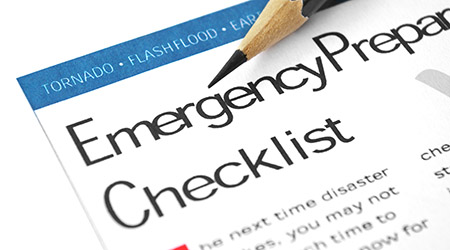FEMA requires healthcare facilities to be properly equipped and prepared to be functional for at least 96 hours under catastrophic conditions such as power outages, fire or flood. Large-scale natural disasters can inundate a community’s infrastructure, particularly access to essential medical services. Whether the crisis is an earthquake, flood, tornado, hurricane, or wildfire, healthcare facilities need to be prepared. The American Association of Critical-Care Nurses offers six tips managers can implement when preparing for and dealing with a disaster:
- Communication is key. Communication can be challenging to access during a disaster due to power outages. During Superstorm Sandy in 2012, nurses found creative solutions to deal with communication, according to a 2017 report. These solutions included using batteries, unlocking medication carts in anticipation of the power outage, and handwriting medical summaries for patients being evacuated to other hospitals.
- Social support showed up in the study as another key to dealing with disasters. The study showed that at a New York Hospital, nurses worked together collaboratively, supported one another, and were resilient throughout the many challenges of the disaster. They even successfully evacuated 300 patients. In the aftermath of the disaster social support was critical to the management of the emotional toll healthcare workers had suffered.
- Having regular annual training for catastrophes is a must. Being prepared should be a part of normal hospital operations, not something to be taken care of only during a disaster.
- A facility should be sure its hazard vulnerability analysis is updated annually, as well as before any large planned gathering where a disaster could happen.
- During a disaster, ICU capacity and overall staffing may need to rapidly increase. Having a plan to mobilize staff and expand the critical care space is vital to preparedness. The plan should include how to contact staff and where additional patients should be placed. Facilities should consider how they will transport any additional equipment that is required to where it needs to go.
- During a disaster, job action sheets letting staff know their duties should be in place for each department Regardless of the staff working at the time, job action sheets help ensure a consistent approach is employed.
These six tips are designed to help healthcare facilities prepare for an array of disasters. Ultimately, preparation is key to success, and safety protocols should regularly be reviewed in the event of an emergency.

 Building Sustainable Healthcare for an Aging Population
Building Sustainable Healthcare for an Aging Population Froedtert ThedaCare Announces Opening of ThedaCare Medical Center-Oshkosh
Froedtert ThedaCare Announces Opening of ThedaCare Medical Center-Oshkosh Touchmark Acquires The Hacienda at Georgetown Senior Living Facility
Touchmark Acquires The Hacienda at Georgetown Senior Living Facility Contaminants Under Foot: A Closer Look at Patient Room Floors
Contaminants Under Foot: A Closer Look at Patient Room Floors Power Outages Largely Driven by Extreme Weather Events
Power Outages Largely Driven by Extreme Weather Events